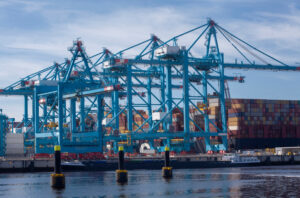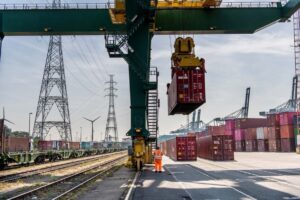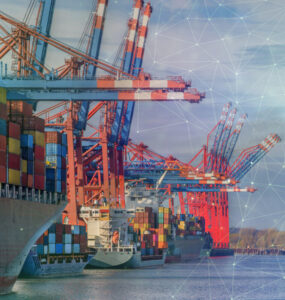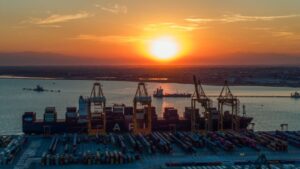The widening of the Panama Canal next year will allow much bigger ships to sail through. However, shipping should not be in a rush to upgrade to larger ships along the Asia-USEC via the Panama Canal and instead deploy ships in line with market demand, according to the latest Container Insight Report released by Drewry Maritime Research.
Soon after the completion of the Panama Canal in April, 2016, carriers will have the opportunity to replace their 5,000-TEU maximum ships that currently transit the Central American cut-through with ships of anything up to 14,000 TEU.
The temptation to alleviate the stress on the Asia-Europe routes and cascade the biggest ships possible from there to the Asia to East Coast North America trade will be immense. However, because they can, it doesn’t mean they should.
There are currently 15 Asia to ECNA via Panama services in operation, requiring 159 ships to maintain weekly frequency.
The average size of vessel on this route is 4,600 TEU. Weekly services from Asia to ECNA via the Suez Canal currently number nine, with the average size of the ships being 8,000 TEU.
The huge growth seen this year to the East Coast (EC) has caused the biggest coastal shift in the Transpacific container trade this century, boosting the EC/Gulf share by 4% to 33%.
The East Coast recently saw a massive increase in cargo, a shift that was triggered by the congestion that was intensified by the closure of a number of US West Coast ports. The West Coast has since caught up with container volumes.
(Source: iStock)
This year’s shift was accelerated by the most recent West Coast congestion but Drewry anticipates the trend to continue, if at a slightly less aggressive pace.
Shipping lines on the Asia to USEC route initially pocketed a pretty bonus from the West Coast malaise as the freight rate premium for East Coast services soared.
How quickly and to what extent carriers introduce bigger ships into the Asia-ECNA via Panama route, assuming they will want to maintain the high ship load factors, will depend on the rate of demand growth to the EC and on other factors, such as railroad intermodal pricing from the WC.
Recently, Zim president and CEO Rafi Danieli recently predicted that the East would gain parity with the West for container shipments from Asia by 2020, which were it to come true would provide carriers with the opportunity to introduce the biggest ships possible pretty quickly.
Drewry believe that if carriers decide to flood the market with 13-14,000 TEU ships, the number of services would have to be reduced from 15 as there are now just 5, or risk utilisation and rates sinking fast.
More likely, carriers will take an incremental approach with the average size of ships rising to between 6-8,000 TEU at the outset, rising as demand dictates, which will still provide carriers with improved economies of scale and at the same time maintain satisfactory competition and conditions to generate profits.
Drewry View: Drewry expects carriers to resist the urge to flood the Asia to USEC via Panama market with the biggest ships possible. Ships will get bigger and there will be fewer weekly services, but the vessel upgrades will be incremental and in line with demand growth.









